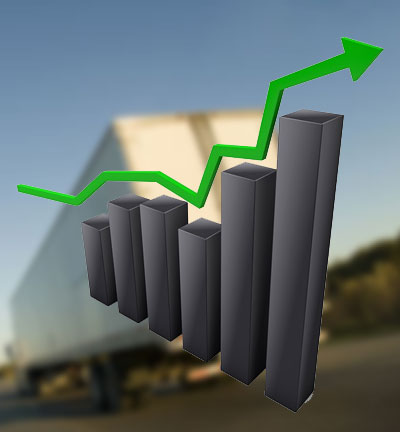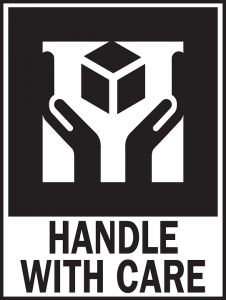
by logisticsplus | Jul 9, 2018 | News
 Less than truckload (LTL) shipping involves the transportation of relatively small freight shipments that can weigh anywhere between 150 to 10,000 pounds. LTL carriers collect freight from multiple shippers and consolidate that freight onto trailers before the delivery process begins. LTL shipments can be very confusing, because unlike Full Truck Load (FTL) shipments, LTL shipping rates are calculated from several varying factors. Knowing the factors that impact LTL shipping rates is helpful for creating more realistic rate expectations and increasing long-term savings. Here are the factors:
Less than truckload (LTL) shipping involves the transportation of relatively small freight shipments that can weigh anywhere between 150 to 10,000 pounds. LTL carriers collect freight from multiple shippers and consolidate that freight onto trailers before the delivery process begins. LTL shipments can be very confusing, because unlike Full Truck Load (FTL) shipments, LTL shipping rates are calculated from several varying factors. Knowing the factors that impact LTL shipping rates is helpful for creating more realistic rate expectations and increasing long-term savings. Here are the factors:
Weight & Density
Weight and density are the two most basic aspects of how LTL shipping rates are calculated. Typically, freight companies rate shipments at the lowest weight and category, meaning that the more a shipment weighs, the less it costs per hundred pounds. Furthermore, be sure to measure the longest sides of all packaging, including anything that overhangs. To determine the density of your shipment, the total weight of your shipment is divided by the total cubic feet. Logistics Plus offers a free, online freight density calculator to quickly determine the density of any shipment.
Freight Classification
Once density is calculated, you can now determine the proper freight classification. The National Motor Freight Traffic Association (NMFTA) established “freight classes” that are used to classify commodities for rating purposes. Classifications are based on a products density, stow-ability, value, handling and liability. Each commodity is categorized into one of 18 different freight classifications that range from 50 to 500. Generally, the lower the freight class, the more dense the commodity. Conversely, a higher freight classification represents a less dense product that typically takes up more space. As a general rule of thumb, the higher the freight class, the higher the rate will be. You can read more about freight classification on the Logistics Plus website.
Base Rates & Discounts
Every LTL carrier establishes their own base rates upon which they normally offer discounts. Base rates are typically quoted per 100 pounds, but can vary by company or by lane. One thing to make note of is that carriers will change their base rate depending on their need for additional volume and increased costs for lanes where they have a good balance between trucks and freight. It’s difficult to create an accurate comparison of LTL shipping rates just by looking at base prices or discounts because they’re almost always different. A lower discount off a lower base rate can actually be a better deal than a higher discount off a higher base rate. Logistics Plus can offer you a free freight analysis if you want to compare rates.
Minimum Charges
The absolute minimum charges refers to the minimum price a carrier will offer, and they will not go lower no matter the circumstances. In this case, even when discounts are negotiated, the absolute minimum charge still holds true. This minimum charge helps ensure that carriers cover all of their fixed costs for a specific shipment or lane. Understanding your carriers absolute minimum charge is an important factor to research, especially if you’re shipments are small and moving across short distances.
Origin & Destination
A shipment that needs to travel a further distance will tend to have higher rates than a short distance shipment. Shippers should be aware of which carriers serve their intended destination so that they can avoid additional charges or fees. It’s important to choose the correct carrier because if your shipment needs to be transferred to another LTL carrier, costs will rise and the goods will be more susceptible to damages.
Surcharges & Accessorial Fees
Accessorial fees apply when additional services are required to handle your shipment. These fees apply when the typical dock-to-dock pickup and delivery service most LTL carriers provide isn’t enough. Common examples of accessorial services include lift-gates, weekend deliveries, and pickup or delivery at special origins or destinations. Fuel surcharges are also a common accessorial fee that LTL carriers charge. Knowing how these additional fees impact your overall expenses is important when determining who you want to work with as your LTL carrier.
If you feel like you’re over-spending on LTL freight, or if you lack the expertise to negotiate your own rates, please consider working with Logistics Plus. As a top freight brokerage firm, our LTL experts help hundreds of companies save on their LTL shipping every day. Logistics Plus will ensure you get a quick and accurate LTL freight quote for any shipment.



by logisticsplus | Jul 2, 2018 | News
 Less than truckload (LTL) shipping can be expensive and difficult if it’s not done efficiently. It’s important to understand the different ways you can save on LTL shipping in order to better manage your transportation expenses and maintain good relationships with your carriers. Here are four (4) tips to become more efficient and cost-effective with LTL shipping:
Less than truckload (LTL) shipping can be expensive and difficult if it’s not done efficiently. It’s important to understand the different ways you can save on LTL shipping in order to better manage your transportation expenses and maintain good relationships with your carriers. Here are four (4) tips to become more efficient and cost-effective with LTL shipping:
- Use Proper Packaging
- If a shipment is not properly packaged, you might be paying for extra shipping space you don’t really need. Also, an improperly packed shipment increases the risk of damages that may occur with the handling of your product. Its always important to recognize, and plan for, the things can go wrong, such as someone dropping your package. Furthermore, if you have a well-packaged shipment that is difficult to damage, it may save you the time of filing a tedious freight claim.
- Consolidate Units When Possible
- It is much easier for a carrier to handle one pallet that contains multiple units rather than handling a bunch of individual units. Not only does it make it easier for shipping purposes, but having one pallet with multiple units greatly decreases the risk of damages compared to shipping individual items.
- Always Report Accurate Shipping Weights and Dimemsions
- Always accurately state the weight and dimensions of your shipment whenever you have an LTL shipment. Although the shippers are responsible for correctly stating the weight, most carriers re-weigh all shipments. If the weight isn’t stated correctly, it can lead to additional charges that ramps up costs and decreases efficiency.
- Ensure Your Bill Of Lading Is Correct
- More LTL carriers are enforcing bill of lading accuracy. Many carriers even require the proper freight classification and NMFC item number. An inaccurate bill of lading can cause issues for carriers, straining the shipper and carrier relationship. A great way to increase bill of lading accuracy is to implement a transportation management system (TMS) that uses automation features to decrease the amount of errors made.
Less than truckload shipping doesn’t have to be such a difficult task. Following these tips will not only save you money, it will increase your efficiency. To find out how you can save on LTL shipping, contact Logistics Plus today for assistance. Our team of LTL experts will quickly show you how we put the “plus” in Logistics Plus.



by logisticsplus | Jun 11, 2018 | News
 Learning how to correctly file a freight claim is important because it can save time and money for your company. A freight claim is a legal demand for the payment of money, stemming from the breach of a contract of carriage. Following strict guidelines and processes is the only way to correctly deal with these claims. Most importantly, there are four crucial elements to filing a freight claim:
Learning how to correctly file a freight claim is important because it can save time and money for your company. A freight claim is a legal demand for the payment of money, stemming from the breach of a contract of carriage. Following strict guidelines and processes is the only way to correctly deal with these claims. Most importantly, there are four crucial elements to filing a freight claim:
- The shipment needs to be identified so the carrier can complete an investigation.
- The type of loss or damage must be stated.
- The amount for the claim must be estimated.
- A demand for payment by the carrier must be included.
After making sure all four elements are clearly indicated, follow these tips and suggestions to ensure you correctly file your next freight claim:
- Take immediate action
- Taking immediate action is a crucial step of effectively filing a freight claim. Freight claims for loss or damage are generally governed by Title 49, CFR. Claimants must file the claim within the time limits specified in the bill of lading or contract of carriage. The time period cannot be more than 9 months from date of delivery or, if never delivered, the expected delivery date. Unless it’s otherwise agreed upon in a contract, a carrier must acknowledge receiving the claim within 30 days. The carrier must then pay, offer to compromise, or disallow the claim within 120 days or provide status reports every 60 days after. If the carrier fails to abide by these rules, it should be notified that it is violating the FMCSA claim regulations. Furthermore, if the damages are not noted on the delivery receipt at the time of delivery, you have only 5 days to alert the carrier of concealed damage. After these 5 days, the carrier can deny the claim due to the shipment being signed as clear.
- Attempt to mitigate the damages
- A responsibility that all parties of the shipping process share is attempting to mitigate damages. It is your responsibility to give a good faith effort to salvage damaged products unless you consider them to be totally or substantially useless and of no good.
- Have additional documentation available
- In order to make sure your freight claim is successful, always include supporting documentation. If it’s available, you should include the original bill of lading (BOL), the paid freight bill, inspection reports, notification of loss, copies of request for inspection, invoices, waivers, and other appropriate documents. Recently, some carriers have adopted picture policies, which require photographic documentation of all damages or else they will not process that claim. The more information you have regarding the freight, the more effective your claim will be.
- Create a detailed description of the losses or damages
- A detailed description of the loss or damage should be properly documented. The claimant should include the number of items damaged, the type of damage, the value of each unit, and the total claim amount. For example:
- 15 boxes of cell phones – (water damaged) @ $500 each: $7,500
- 5 boxes of cell phone cases – (crushed) @ $100 each: $500
- Total Damages: $8,000
- Amount Salvaged: $250
- Total Claim Amount: $7,750
If you frequently ship LTL freight or truckload shipments, freight losses and damages are almost inevitable, as is dealing with freight claims. That’s why it’s important to have an experienced and caring freight management partner working with you every step of the way. When you work with Logistics Plus, we’ll gladly assist you with the filing or processing of your freight claims, and we’ll assist you to find the carriers that best represent your interests. Contact us today to learn more.


by logisticsplus | Apr 25, 2018 | News
 As a reminder, new National Motor Freight Classification (NMFC) freight classification changes will be going into effect this weekend on April 28, 2018. According to 2018-1 Public Docket files and a February 16, 2018 Notice of Disposition document the commodities affected include …
As a reminder, new National Motor Freight Classification (NMFC) freight classification changes will be going into effect this weekend on April 28, 2018. According to 2018-1 Public Docket files and a February 16, 2018 Notice of Disposition document the commodities affected include …
- Ink, Dry Ink or Toner
- Privacy Stalls or Partitions
- Compressors, refrigeration or air conditioning
- Coffee Makers or Coffee or Hot Water Urns
- Shower or Bathtub Doors, Enclosures or Enclosure Sections
- Cookware or Bakeware
- Computer Component Security
- Cars, Lift Trucks or Vehicles
- Borax (Sodium Borate)
- Body Parts, NOI, Pickup Truck Bed Storage Boxes or Organizers
- Tools, power, other than power hand tools
- Capsules, dosage, empty
- Air Cleaners or Air Filtering Machines
- Insoles
- Sweeteners, NOI, including Sugar Alcohols
- Birdseed or Bird Food,
- Games or Toys, NOI
- Ice Crushing or Ice Shaving Machines
- Fireplaces or Imitation Fireplaces, NOI, or Fireplace Inserts
- Chairs or Stools, NOI, including Theater Chairs or Seating
Please contact your Logistics Plus freight representative if you have any questions regarding the new rules.

by logisticsplus | Oct 18, 2017 | News
 Here are the top 10 reasons why businesses need Logistics Plus to help them manage their transportation, logistics, and global supply chains.
Here are the top 10 reasons why businesses need Logistics Plus to help them manage their transportation, logistics, and global supply chains.
- We manage your logistics so you can focus on your core business.
- We have been in business for over 25 years, and our teams have a wide variety of skills.
- Our teams can integrate with your company in a variety of ways, from full-time onsite resources to offsite logistics management of multiple locations.
- We manage inbound and outbound, domestic and international freight.
- We connect all the links in your supply chain, from a vendor to end customer.
- Our services are customized to your needs, so you always get exactly what you want.
- We have offices in over 20 countries, and valued partners throughout the world.
- Our professionals keep up with the constantly changing logistical landscape.
- We are big enough to be effective but small enough that your business will be very important to us.
- We can take away your headaches!


 Less than truckload (LTL) shipping involves the transportation of relatively small freight shipments that can weigh anywhere between 150 to 10,000 pounds. LTL carriers collect freight from multiple shippers and consolidate that freight onto trailers before the delivery process begins. LTL shipments can be very confusing, because unlike Full Truck Load (FTL) shipments, LTL shipping rates are calculated from several varying factors. Knowing the factors that impact LTL shipping rates is helpful for creating more realistic rate expectations and increasing long-term savings. Here are the factors:
Less than truckload (LTL) shipping involves the transportation of relatively small freight shipments that can weigh anywhere between 150 to 10,000 pounds. LTL carriers collect freight from multiple shippers and consolidate that freight onto trailers before the delivery process begins. LTL shipments can be very confusing, because unlike Full Truck Load (FTL) shipments, LTL shipping rates are calculated from several varying factors. Knowing the factors that impact LTL shipping rates is helpful for creating more realistic rate expectations and increasing long-term savings. Here are the factors:



 Less than truckload (LTL) shipping can be expensive and difficult if it’s not done efficiently. It’s important to understand the different ways you can save on
Less than truckload (LTL) shipping can be expensive and difficult if it’s not done efficiently. It’s important to understand the different ways you can save on 


 Learning how to correctly file a freight claim is important because it can save time and money for your company. A freight claim is a legal demand for the payment of money, stemming from the breach of a contract of carriage. Following strict guidelines and processes is the only way to correctly deal with these claims. Most importantly, there are four crucial elements to filing a
Learning how to correctly file a freight claim is important because it can save time and money for your company. A freight claim is a legal demand for the payment of money, stemming from the breach of a contract of carriage. Following strict guidelines and processes is the only way to correctly deal with these claims. Most importantly, there are four crucial elements to filing a 

 Here are the top 10 reasons why businesses need
Here are the top 10 reasons why businesses need 